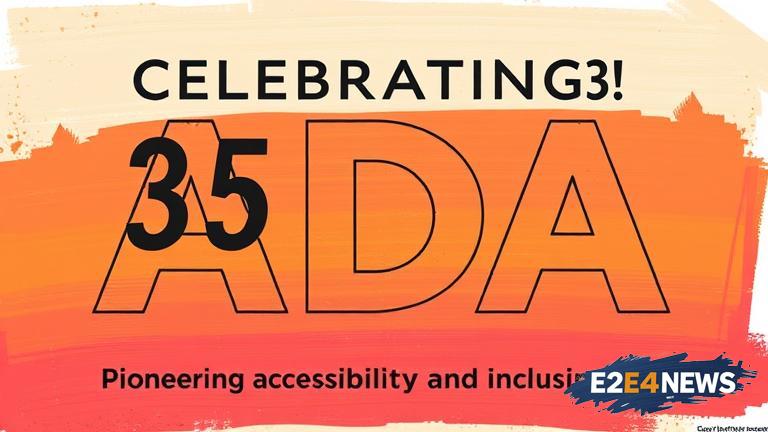The Americans with Disabilities Act (ADA) was signed into law on July 26, 1990, marking a significant milestone in the fight for accessibility and inclusion. Over the past 35 years, the ADA has had a profound impact on the lives of millions of Americans with disabilities, providing them with equal access to employment, education, healthcare, and other opportunities. The ADA has also played a crucial role in promoting accessibility in public spaces, transportation, and technology. Despite the progress made, there is still much work to be done to ensure that all individuals with disabilities have equal access to opportunities and resources. The ADA has been amended several times since its inception, with the most significant update being the ADA Amendments Act of 2008. This amendment expanded the definition of disability and provided greater protections for individuals with disabilities. The ADA has also been instrumental in promoting accessibility in the workplace, with employers being required to provide reasonable accommodations for employees with disabilities. Additionally, the ADA has played a key role in promoting accessibility in education, with schools and universities being required to provide equal access to educational opportunities for students with disabilities. The ADA has also had a significant impact on the development of accessible technologies, such as screen readers and closed captions. Furthermore, the ADA has promoted accessibility in public spaces, such as restaurants, stores, and hotels, by requiring that these establishments provide equal access to individuals with disabilities. The ADA has also played a crucial role in promoting accessibility in transportation, with public transportation systems being required to provide equal access to individuals with disabilities. In recent years, there has been a growing focus on promoting accessibility in the digital sphere, with the ADA being used to ensure that websites and online platforms are accessible to individuals with disabilities. Despite the progress made, there are still many challenges that individuals with disabilities face, including lack of access to healthcare, education, and employment opportunities. To address these challenges, it is essential that we continue to promote accessibility and inclusion, and work towards creating a society that is equal and accessible for all. The 35th anniversary of the ADA is an opportunity to reflect on the progress that has been made and to look towards the future, with a renewed commitment to promoting accessibility and inclusion. It is also an opportunity to recognize the contributions and achievements of individuals with disabilities, who have played a crucial role in shaping the disability rights movement. The ADA has been a cornerstone of accessibility and inclusion, and its impact will be felt for generations to come. As we move forward, it is essential that we continue to promote accessibility and inclusion, and work towards creating a society that is equal and accessible for all. The ADA has paved the way for future generations of individuals with disabilities, providing them with the opportunities and resources they need to succeed. In conclusion, the 35th anniversary of the ADA is a significant milestone, marking 35 years of progress towards accessibility and inclusion. It is an opportunity to reflect on the past, to look towards the future, and to renew our commitment to promoting accessibility and inclusion. The ADA has been a powerful tool for promoting accessibility and inclusion, and its impact will be felt for generations to come.
